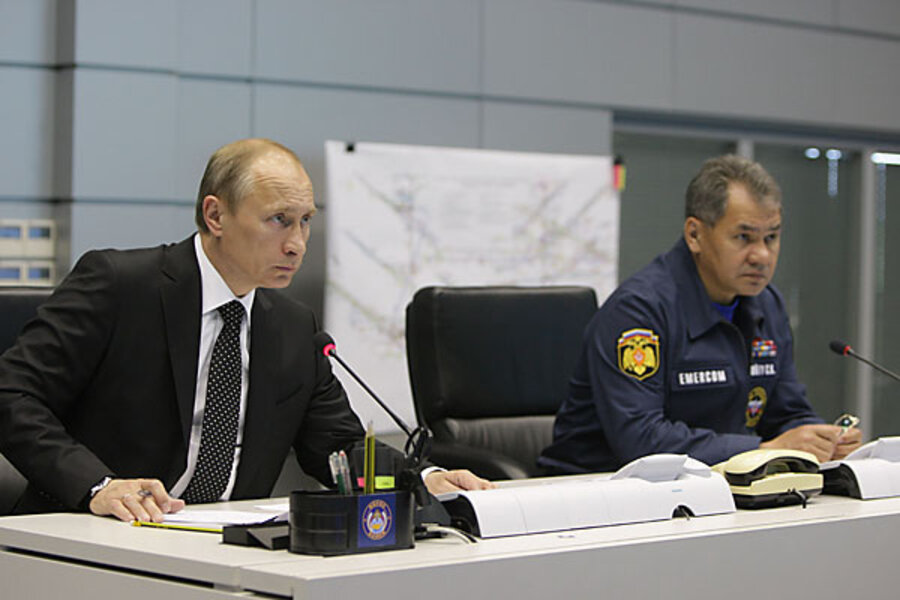Race to save scores trapped after Russia coal mine disaster
Loading...
| Moscow
Two powerful blasts at Russia's largest coal mine Sunday killed at least 12 miners and left 84 people – including 19 rescue workers – trapped deep underground while emergency services scramble to clear smoke and deadly gas from the stricken tunnels.
About 360 people were working at the Raspadskaya mine, in the western Siberian coal region of Kemerovo, when the Russia coal mine disaster struck early Sunday morning.
The first explosion, reportedly caused either by methane or pockets of highly-volatile pulverized coal dust, killed four miners and injured dozens more.
The second blast hit four hours later, as rescue workers were trying to evacuate the shaft, killing eight more and trapping scores in the lower tunnels – almost half a kilometer underground – which authorities described as choked with smoke and laced with volatile gas.
The second explosion, which shattered the mine's ventilation systems and damaged buildings on the surface, forced authorities to abandon rescue efforts until emergency pumps could be brought in to restore the flow of air through the tunnels. As of Sunday evening no one was sure how long that might take.
"By all accounts, the situation is hard, very hard at the Raspadskaya mine. I would say, it is tragic," Russian Prime Minister Vladimir Putin told an urgent Cabinet meeting in Moscow.
"The worst thing is that we can't send additional rescue forces into the mine in the absence of air ventilation," he said. "But we can't sit back and hope the situation will improve on its own. We must make maximum effort and do all we can to save the people."
As is usual in such accidents, Russian authorities immediately opened a criminal investigation and sent a team of investigators to the scene to look into the "disruption of safety rules for mining work leading to the death of one or more people."
But fatal mine disasters occur with depressing regularly in Kemerovo, a sprawling coal basin about 2,500 miles east of Moscow, at a rate of around three or four every year.
The worst so far happened three years ago at the nearby Ulyanovskaya mine, when a short circuit in newly-installed equipment triggered a massive blast that killed 108 people. Subsequent investigations found that mine operators had deliberately lowered the sensitivity of methane detectors inside the mine.
That led the Kremlin to promise a sweeping review of all Russia's mines and imposition of tough new safety standards.
The Raspadskaya mine, built in the early 1970s, had a history of safety violations and deadly accidents, including a 2001 a methane blast that killed four workers. The mine was shut down for two weeks following the Ulyanovskaya disaster due to numerous infractions found by investigators.
As recently as January of this year a tunnel collapse at Raspadskaya killed one miner, but that apparently did not prompt a wider investigation of the mine's safety systems.





